Advertisement
Published: November 16th 2006
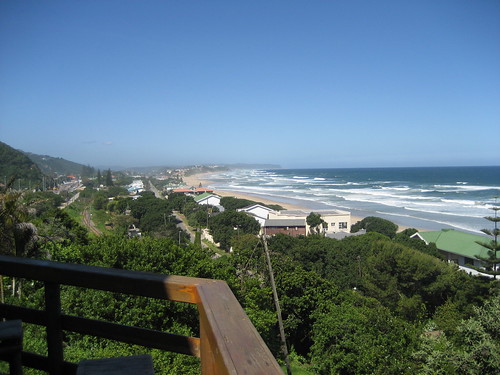
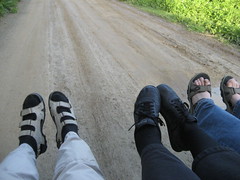
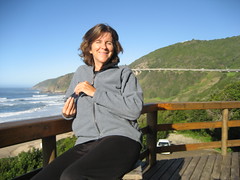
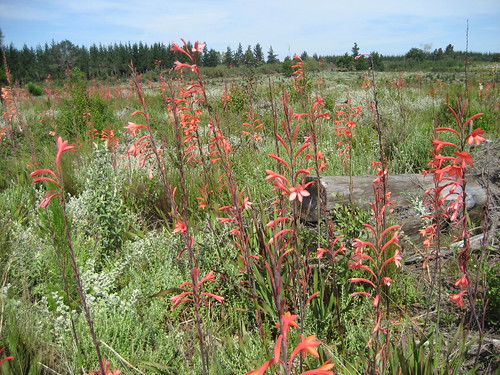
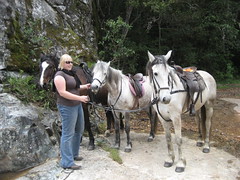
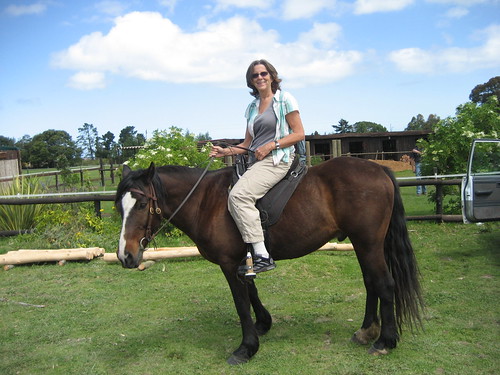
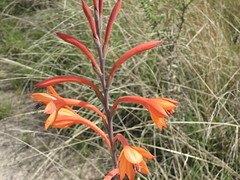
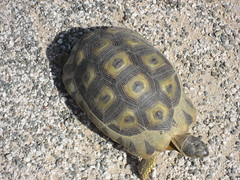
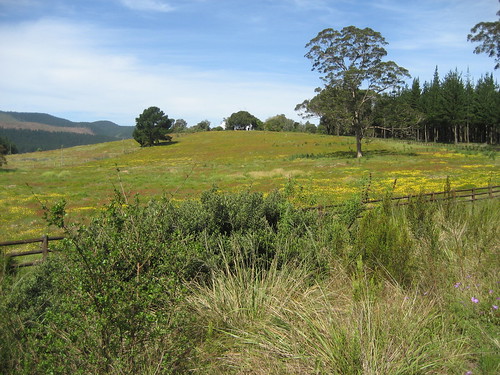
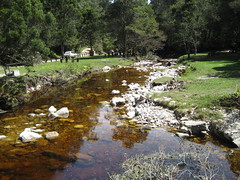
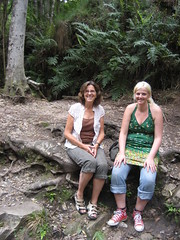
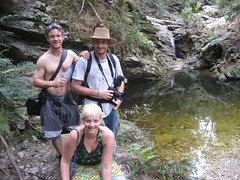
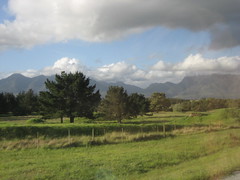
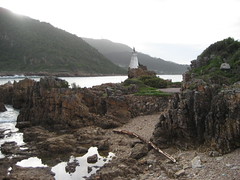
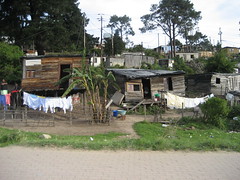
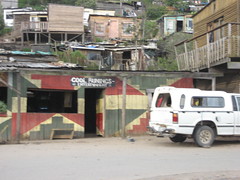
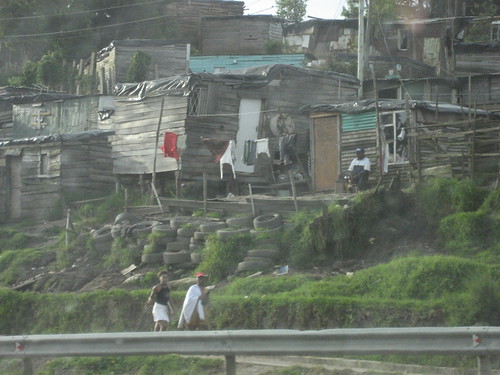
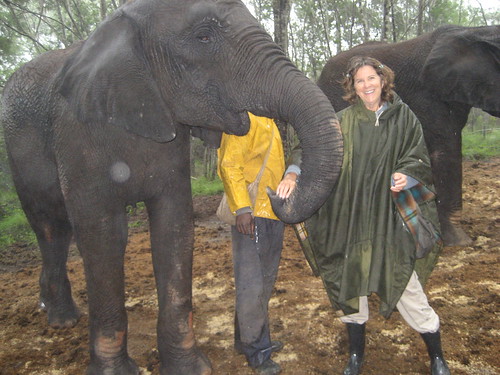
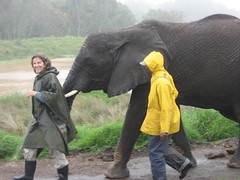
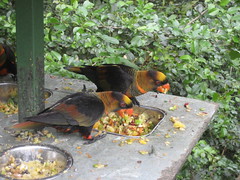
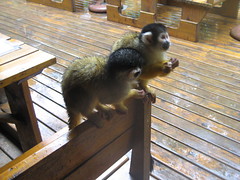
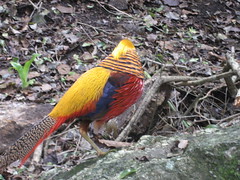
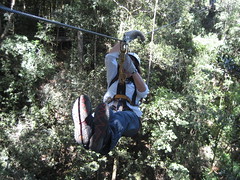
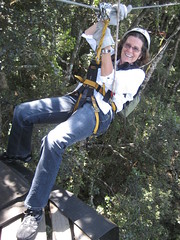
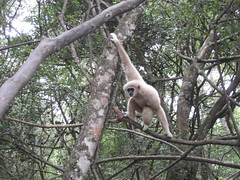
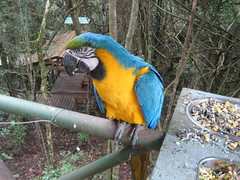
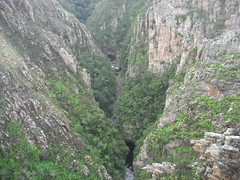
The next stop would be along the Garden Route—the scenic rugged stretch of coastline with ragged cliffs and the sea below. There were four of us getting off in the village of Wilderness. We were met by the manager of the backpackers who loaded us up in her small pickup—three of us sitting on the tailgate holding on tight, with our legs extended, as she took us up the little dirt road. The place wasn’t fancy but the million-dollar view of the beach more than made up for it.
As she was showing us around, I noticed several posted signs on the outdoor bathrooms saying, “Use at Your Own Risk”. At first, I didn’t think much of it, but I began to wonder about what kind of risk one might encounter using the toilets—so I asked. She brushed off my questions saying that these days everyone had to think about liability. Still not satisfied, my mind was trying to conger up what great dangers might be lurking in the loo—when it hit me! “Do you have snakes here?” With this, she nonchalantly admitted that occasionally they did see them—the puff adder variety. Welcome to Africa!
Three of us girls took a sunset stroll to have dinner in the little village. We had a very good meal and, when we finished, the friendly staff found us a ride home so we wouldn’t have to walk home in the dark. The next night we ate there again and this time the owner of the restaurant drove us home. How’s that for service!
On the second day, an English girl named Harriet talked me into going horseback riding with her. My horse was easy but when we trotted, I was flopping all over the place and my knees really felt it. After three hours, I was ready to plant my feet on the ground. The two of us were both going to the tourist town of Knysna and we decided to share a car rental so we could see some of the backcountry. Since she is from the UK, I volunteered her to do the driving. When we came to the first dirt road she got a little nervous about driving it as she’d never driven on a dirt road before. This fascinated me but I guess they don't have many dirt roads left in England.
We put 150 km. on the car combing inland roads and passes through beautiful scenery with flowers. At one spot we found the remnants of an old mining town active in the early part of the 1900’s. There used to be elephants here, but they were killed off or lost their habitat when they felled the forests. Some claim there are three left but most think they are long gone. The tiny museum also said that many people lost their lives due to snakebites.
We drove to a lovely forested area called Jubilee where there was a little creek with an unusual gold color. Our plan was to do some hiking nearby but first Harriet went to use the forest restrooms. Before she could close the door, a black snake came out from under a wooden crate in the corner. She came running back to the car shaking like a leaf. It took a while before she was calm enough to drive. We don't know what kind it was but black mambas are the ones most responsible for deadly bites.
We stopped at a country store which had all the merchandise behind a huge cage of bars. You lookie but no touchie. You told them what you wanted and they got it for you—one way to cut down on shoplifting--another reminder that this was South Africa. On the way back to town, we passed through a township with the same signs of poverty as all the others. These homes looked different because they were built out of rough planks of wood, which were available due to nearby logging.
Knysna is a town with plenty of shops and restaurants and is located on a large lagoon. They grow oysters here and, much as I love them, the only way you can get them in this town is raw. Nowhere did they serve them cooked and, in fact, I was given the impression it would be sacrilegious to do so.
My dorm cleared out and the two girls sharing it were out for the evening so I had the room to myself. While I was reading with my headlamp, a new guy named Bill came in and took one of the vacant bunks. We started talking the usual stuff—“Where you from, where you going”. We were chatting away in the dark like we knew one another. He was from JoBurg and was touring the country with friends visiting from Scotland who were on their honeymoon.
In the morning Bill and his friends Neil and Siri Elise from Edinburgh asked me to join them for breakfast. We drove to a little place with good coffee and made plans to go on a hike. They wanted to go to the same area where Harriet had seen the snake. Siri, who is a travel writer, talked about the ins and outs of her career and who pays for articles and how much etc. She’s from Norway where magazines pay well so she and Neil can finance their travels with her stories and his photography.
They were neat people and a lot of fun and we exchanged invites to visit. We needed to return in time for my Baz Bus pickup so we came back to town for a beer and Neil drove me to the hostel just in the nick of time. When we left to get the car, which was parked on the street, there was a guy standing near it expecting a tip for “watching” the car. This is the norm throughout S. A. but Neil's comment was that he refused to pay someone for loitering.
Plettenburg Bay was only an hour up the coast and when the Baz Bus dropped me off I quickly realized I'd forgotten my daypack (with photo cards and journal) and my jacket on the vehicle. I was in a tizzy for the time it took to get them back. Convincing the hostel to make phone calls was like pulling teeth. Even the Baz Bus insisted on a liability disclaimer just to return my things!
The weather was mild, drizzly and too wet to do much outside. The good thing is that it’s whale season and you can see them all along the coast. When it cleared, a girl from Germany and I walked to a beach-side restaurant and, over soup and wine, we watched whales frolicking in the bay.
There was a nice 19 year old Afrikaner boy staying at the hostel who was quite interesting and very sweet. He was on his first trip away from home and I think he was a little lonely because he seemed to seek out my company—kind of like a mother figure. When all this is over, one of the best parts of my travel will be the memory of some really great people I’ve met.
There were several places up the road that I wanted to see so I rented a car and first drove up to an elephant sanctuary. It was raining so we were given ponchos and I got the last pair of boots, which was a good thing, as I would not have been happy traipsing my Mephistos through muck and elephant dung.
These animals were all endangered or in captivity and were not taken from the wild. The three larger elephants were between 8-12 years old and were not fully grown and there also were several babies. They were splashing around in a large pond when we arrived and had to be coaxed out of the water with food.
Our group spent some time walking with them and it was really something to feel their warm breath on our hands. This was a real close-up experience where we fed them, touched their skin, felt the hair on their tails and eyelashes, felt their mammary glands (handler’s idea, not mine) and looked inside their mouths. The elephants obliged while we poked and proded and we were given a lesson on their biology and evolution. I learned more about elephants than I will ever need to know. The whole experience was very moving and I came away grateful to have been able to do this.
Storm’s River is an hour up the road and where I would be staying on the edge of the Tsisikamma National Park. Located nearby were two more animal sites: “Birds of Eden” and next door to it is “Monkeyland”. The birds are housed in the largest covered aviary in the world. Wooden ramps take you through a forest filled with a vast variety of colorful birds from around the world. They have created habitats ranging from misty rain forests to open water lakes and marshlands. The feeders are located near the ramp providing spectators with good view of the birds when they land to eat. Like a fool, I extended my finger to a parrot who quickly bit it--hard! There were so many birds with magnificent colors of every description.
Monkeyland was also fascinating since they all had the run of the forest—that is, until they hit the electric wires. There was a blond ape, lemurs and monkeys of all sizes and shapes. Again, these animals are either pets or from zoos and are not taken from their natural habitats. When they arrive there, the first job is to “de-humanize” them so they are isolated until it is safe to put them with their own kind. We were told they must stop thinking of people as their “tribe”. This whole area was full of activities for the adrenalin junkies—of which there are many. The biggest draw in these parts is the world’s highest bungee jump over a nearby gorge. Much of the buzz was whether or not to jump. Since I’m not crazy and too old to have anything to prove, bungee jumping wasn’t even under consideration. Instead, not wanting to miss out on all the fun, I signed up for a treetop canopy tour.
The canopy tour involves traveling along steel cables through some very tall trees. It was a blast and we got to do it about ten times—each run getting longer (90 meters) and faster. The only thing required of us was to brake by grabbing the cable with a heavy leather glove. If you were going too fast when you braked, it felt like your shoulder socket would dislocate. We flew through the tops of indigenous 600 year old yellowwood trees. It was a super fun time and the people with me were great. One guy took over my camera to get these shots.
This was one of my favorite backpackers. Michelle, who ran the place, was a sweetheart and let me use her laptop and even burned some CDs for me. In exchange, I wrote some ad copy for “the Didge” which is the name of this place. She shuttles people around for free and you can even use the washing machine without charge!
From here on out, it is going to be a very different South Africa because we will be entering an area called the "Transkei" which is one of the "homelands". Homelands are large rural areas where people live in traditiona tribal ways. They had some degree of self-rule during Apartheid and it's the region Nelson Mandella comes from. What I've seen so far has been influenced by the white European culture. The section we are entering will be entirely different.
Advertisement
Tot: 0.184s; Tpl: 0.013s; cc: 12; qc: 50; dbt: 0.0518s; 1; m:domysql w:travelblog (10.17.0.13); sld: 1;
; mem: 1.2mb


























